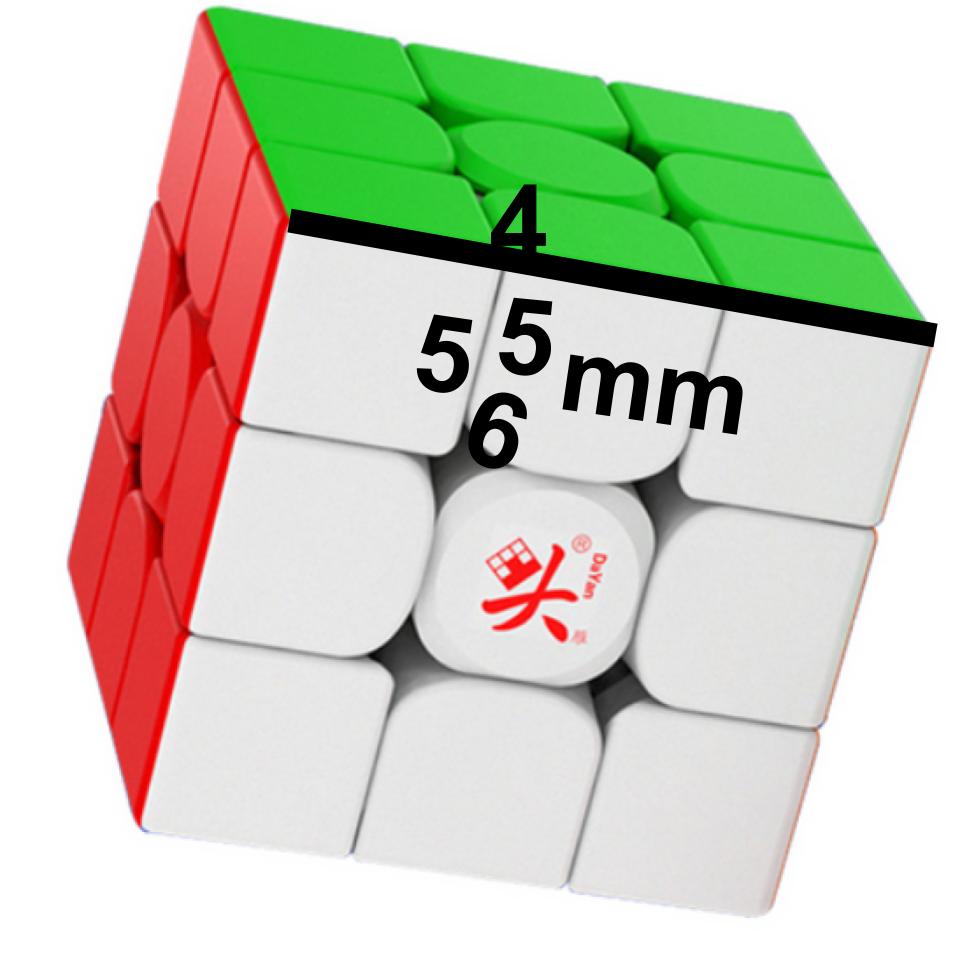DaYan made the very unusual decision of releasing their latest flagship 3x3x3 speedcube in 6 different versions, and unlike other brands, these were not different versions with UV coating, Ball-core...
DaYan released the cube in 3 different sizes, each spaced just 1 millimeter apart! the standard size for a 3x3x3 speedcube has slowly decreased over the last 10 years with the DaYan ZhanChi and MoYu AoLong both being 57mm, when MoYu released a 54.5mm mini AoLong it was considered a far smaller cube but now that is quite normal for some flagship speedcubes such as the WeiLong V9 which is 55mm.
All 6 versions of the DaYan Guhong Pro feature a ball-core which means extra magnets between the core and corners work to improve the stability on the cube, this is probably my favourite recent innovation and I am very pleased to see it being implemented on a cube that is so good value.
The common assumption is that younger children have smaller hands so will solve best on a smaller cube, however, by that logic one would expect many of these Chinese kids such as world record holder YiHeng Wang to be using the Gan Mini M Pro (53mm), instead of the Gan 12 which they all seem to keep using, they probably have the influence to pressue Gan into releasing a mini version of some of their latest releases too. This suggests that younger children do not necessarily need a smaller cube.
Another common assumption is that cubers solve better with a smaller cube for the one-handed event, YJ have even released a 50mm 3x3x3 for this purpose, I personally will usually use the same cube for one-handed as I am for normal 3x3x3 solving as I don't think using a slightly smaller cube is going to make much difference to my ability to make turns with one hand.
So which version should you get?
The first thing to decide is whether you want normal spring tensions or maglev tensions, maglev tensions allow the cube to be faster but most modern speedcubes can easily be too fast anyway, maglev tensions also changes the proportional effect of tensioning (with maglev the effect of tensioning is exponential whereas it is linear with springs). If you aren't fussed which one then it is best to get the standard as it is £2 cheaper.
You can then choose the size, 54mm is the smallest and 56mm is the largest, I personally prefer using the 55mm size as it seems to work best for me but I doubt it would make much difference to my times, the 1mm difference is noticeable when solving though. If you have smaller hands then it may be worth getting the smaller one but again, this is not clear-cut.
Standard screws and springs options (all £13):
Maglev tension options (all £15):



